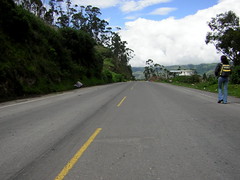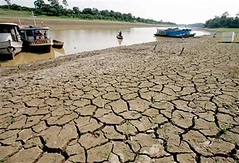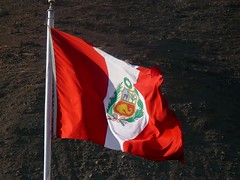The changing face of Cusco’s plaza
From sacred imperial capital of the Incas to commercial centre home to American chains like McDonald’s and Starbucks, the face of Cusco is changing with the times.
Quite a stir was caused last year when McDonald’s quietly opened in Cusco’s Plaza de Armas, the historic centre of the imperial capital of the Inca Empire – the Wajaypata square.
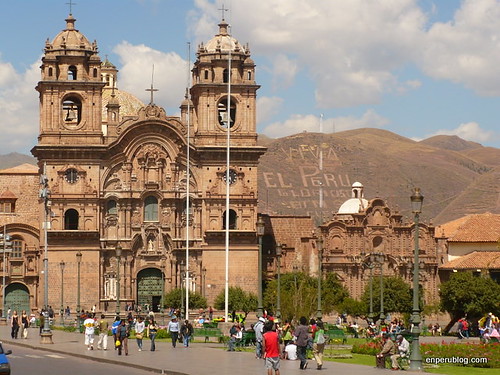
Cusco's historic plaza
According to the South American Explorers Clubhouse, who spoke with Barbara Drake, “they sort of snuck in, there wasn’t any word about it”.
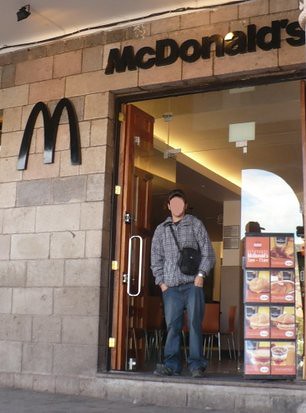
This tourist paid the same for a Big Mac and North American fries as he would have a local food in a fine seated restaurant
Some people were aghast. An American fast food franchise in what is undoubtedly one of the most historic city centres in the world, and to others somewhat of a spiritual hub. Starbucks didn’t last long in China’s Forbidden City, so should McDonald’s in Cusco?
Of those people I spoke to, or who commented on my blog, or the blogs of others, the most support McDonald’s could muster was “it’s great that the economy is expanding and a big chain wants to come here… but it should not be in the Plaza de Armas”.
Personally, I avoid the plaza most of my time in Cusco, I can’t afford to eat in many of the restaurants there. How foreigners who can afford the prices pass up all that fancy Nova Andina stuff and go to McDonald’s is beyond me.
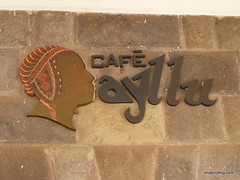
Cafe Ayllu
Passions continued to run high when it was announced that a local legend, the Ayllu coffee house that had been a favourite with travellers and locals for years, was to be closed so that a Starbucks could be opened in its place.
Apparently Starbucks could afford to pay a higher rent that “people before profits” Ayllu just couldn’t match. Protests from locals and tourists couldn’t change the owners minds.
So, is Cusco selling its soul to the devil, and if so, who exactly is doing the selling?
It couldn’t be the Catholic church could it?
In an impoverished city where thousands live a squalid existence far removed from the fancy restaurants and solid gold church alters that the tourists see, the Catholic church in Cusco owns millions of dollars worth of prime real estate.
This does not including churches, which should probably be counted separately – though in Cusco churches aren’t all they seem. In Cusco churches are closed to worshippers during all but a few brief moments each day. Generally churches are commercialised tourist attractions, which with tourist entry fees that are hugely overpriced by Peruvian standards, generate vast profits.
Astute businessmen first, religious leaders second
A committee was organised in Cusco who stated its aim to be that of defending cultural heritage in the city. They organised protests and collected 700 pages of signatures in support of the Ayllu. The Ayllu raised the amount of rent they were willing to pay, but it still didn’t match Starbuck’s dazzling offer. The Archbishop of Cusco told the press that the church had “financial differences” with the traditional corner coffee house of 38 years.
Cusqueños continued to strongly object. Perhaps worried about their primary business model – convincing people of the existence of a deity who needs an organised religion to worship it, an organisation that followers must frequently donate to – the Archbishop took time away from his heavenly responsibilities to cut a deal with the Ayllu.
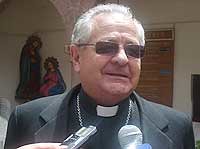
Archbishop Juan Antonio Ugarte
The church would allow the Ayllu to keep functioning if they raised the rent as promised, handed over 10% ownership of the business and paid $200,000 in maintenance expenses. The ageing owners of Cafe Ayllu sadly handed over the keys, unable to make the kind of donation God’s representative on earth had requested.
Archbishop Juan Antonio Ugarte, a member of Lima’s wealthy ruling elite, has signed the deal with Starbucks. The quasi-religious organisation he runs will receive a much higher rent and a juicy 10% of Starbuck’s profit.
Cafe Ayllu closed it doors last week.
These posts on the same subject from these other bloggers may interest you:
Tags: cafe ayllu, catholics, church, cusco, economy, greed, mcdonalds, starbucks, wealth





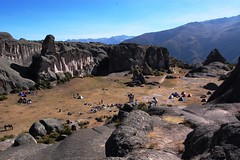
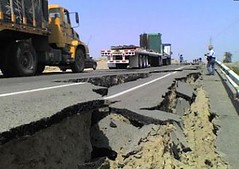
![8 Reasons Why Lima is More Than a Layover [Featured]](http://farm4.static.flickr.com/3070/3050546151_d624cbd4ef_m.jpg)
